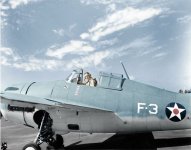ivanmoe
Command Sergeant Major
- Joined
- Feb 2, 2013
- Messages
- 2,959
I’ve been rather bad recently with taking pictures and posting them here. Have a plan to get up to date in the next week or two.
Here are the purchases from June;
View attachment 234645
View attachment 234646
View attachment 234647
Appreciate the pics, Vicknor. They give me a much better idea of what the model looks like. The figures strike me as being more sophisticated than most earlier GGC sets, particularly in the castings themselves and the paint work.
-Moe





